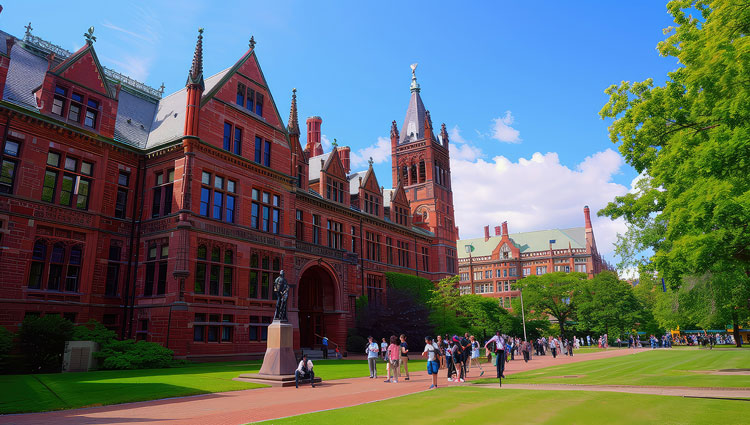Many have asked for years: Is Harvard a bastion of elitism or target of political expedience?
This piece explores how criticism of Harvard has evolved—from the left’s calls for reform to the right’s crusade for punishment.
For decades, Harvard University has stood at the pinnacle of American higher education. With its centuries-old history, billion-dollar endowment, and army of powerful alumni, the institution is synonymous with prestige, excellence—and, for many, entrenched privilege. But while recent criticism of Harvard has come from the political right, it’s worth remembering that the university has long faced a different kind of scrutiny from the left.
A Symbol of Wealth and Inheritance
Liberal and progressive critics have historically viewed Harvard as a symbol of American aristocracy. With legacy admissions and donor influence shaping the student body, critics have argued that Harvard perpetuates a cycle of privilege, preserving access for the children of the elite under the guise of meritocracy. This sentiment was echoed by education reformers like Richard Kahlenberg, who pushed for class-based affirmative action to dismantle what he called “liberal elitism.”
Occupy Harvard and Financial Power
In 2011, the Occupy Harvard movement—born from the Occupy Wall Street protests—highlighted the university’s complicity in America’s growing economic divide. Protesters called out Harvard’s investment strategies, lack of transparency, and links to Wall Street. To them, Harvard was not just an ivory tower—it was a financial fortress guarding wealth and power.
Social Stratification on Campus
Criticism wasn’t limited to financial matters. Campus culture itself came under fire. The presence of exclusive “final clubs” (often compared to secret societies) and the dominance of affluent student demographics fostered resentment. As someone who attended Harvard Summer School, I can personally attest to the atmosphere: a not-so-subtle and constant sense that some students were more equal than others. The ‘we are better than you’ attitude wasn’t imagined—it was institutional. It was baked in.
Despite boasting increasing racial diversity, Harvard remained socially stratified, with many lower-income and first-generation students reporting feelings of isolation and alienation.
And while official statistics tout a “majority-minority” student body, whites and Asians together still make up nearly two-thirds of undergraduates—a reminder that Harvard’s brand of diversity often masks an academically elite and economically privileged core. Factor in many Hispanic students and others who visually present as white, and the ‘diverse campus’ framing starts to look more like creative accounting than genuine equity. A well-marketed illusion.
Anthony Abraham Jack’s seminal work The Privileged Poor made headlines by showing that even among students of color, wealth was a differentiator—exposing gaps in cultural capital and support systems that hinder true equity on campus.
Slavery and Historical Reckoning
Harvard’s ties to slavery have also drawn sharp rebuke from progressives. Movements like “Royall Must Fall” led to the retirement of the law school’s logo—based on a slave-owner’s coat-of-arms—forcing the university to confront its uncomfortable past. Critics asked: How can an institution that claims to champion justice and scholarship continue to display symbols of racial subjugation?
Degrees of Doubt
Progressives have also questioned the real-world value of many Harvard degrees. Critics argue that the university increasingly prioritizes soft disciplines with limited economic utility while underinvesting in the hard sciences, engineering, and fields that drive innovation. In this view, Harvard is producing prestige—not productivity. While often voiced by conservatives, this concern has quietly gained traction among progressive education reformers who fear the school is failing to meet society’s real needs.
The Shift in Critique: Enter the Right
In the past few years, however, Harvard has found itself under a different spotlight. This time, it’s not liberal students marching in Harvard Yard—it’s conservative politicians and media pundits calling for audits, defunding, and public shaming.
The Trump administration, for example, has frozen billions in federal funding, citing ideological bias, antisemitism, and overreach of “woke” culture. It is trying to revoke the university’s certification to enroll international students and labeled Harvard a “liberal mess.” Republican lawmakers argue that the institution has become a breeding ground for progressive orthodoxy and campus censorship and many moderate liberals agree.
But Here’s Where Things Get Murky
Yes, Harvard has flaws. Liberal critics have long made that clear. From economic exclusivity to legacy admissions, from racial blind spots to extreme internal elitism, the university is far from perfect. However, one must ask: are the recent conservative-led crackdowns consistent with the spirit of those past criticisms?
Liberal critiques were aimed at reforming Harvard—making it more inclusive, more transparent, and more accountable to the public good. Today’s attacks, by contrast, seem less focused on equity and more on political retribution.
Targeting the university for promoting diversity, punishing it for campus activism, or threatening its academic freedom doesn’t correct elitism—it simply replaces one form of ideological pressure with another.
So the Question Remains: Would You Donate to Harvard?
The critics may wear different colors, but the institution remains the same: wealthy, very elite, and increasingly under fire. Whether the goal is reform or revenge, your dollars—like your beliefs—send a signal.
Would you fund a legacy of privilege, or a promise of change?






